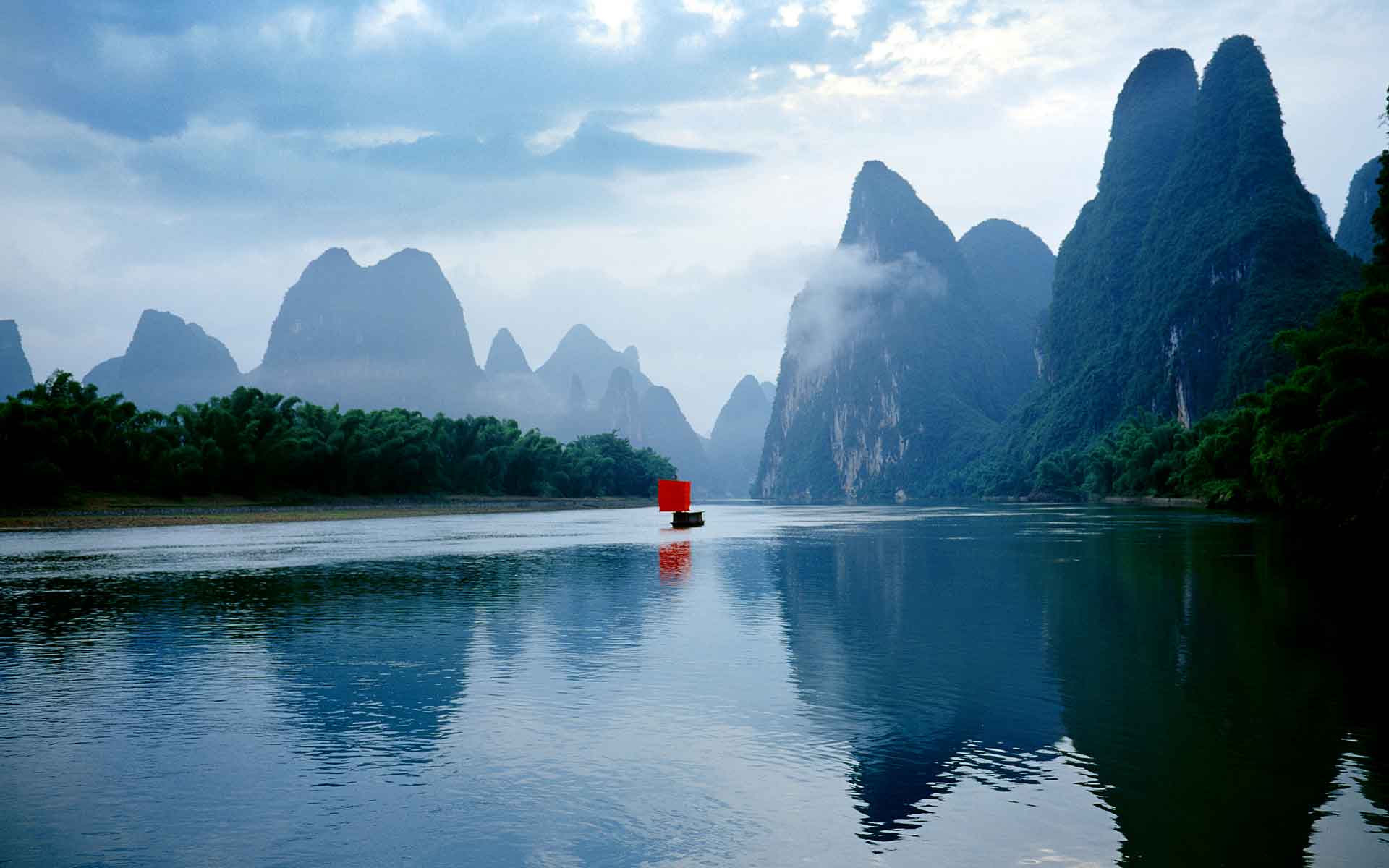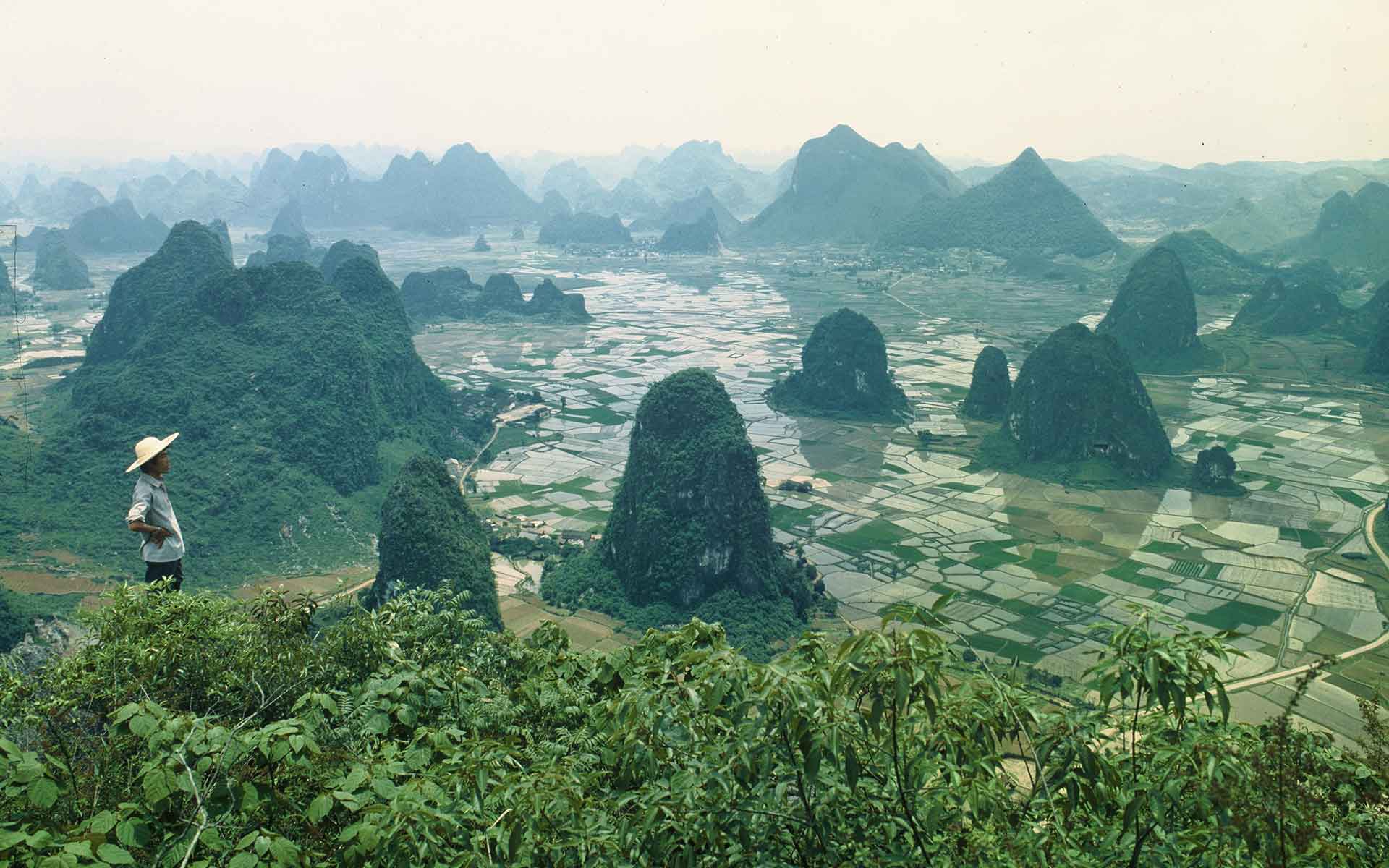
Lijiang River with cone karst reflection, by LI Tengchao in 2008. The scene has been used as the symbol of China on the 20 Yuan CNY banknote.
Geological Period
Neogene to Quaternary
Main geological interest
Geomorphology and active geological processes
Location
Guilin, China
25°00’08”N, 110°27’32”E
Lijiang River with cone karst reflection, by LI Tengchao in 2008. The scene has been used as the symbol of China on the 20 Yuan CNY banknote.
A global reference to show the geological and geomorphological effects of continental karst development.
Guilin Karst is considered a prime example of continental tower karst (fenglin) formation and perfect geomorphic expression of the end stage of karst evolution in South China Karst. Its geological setting in a basin with abundant allogenic water influences the development of distinct karst features, making it an outstanding area for studying karst processes and their environmental impacts. The “Guilin model” of karst evolution, which describes the coexistence and interaction between fenglin and fengcong karst forms, is of international scientific significance (Zhu Xuewen, 1991).
- Geological description
The karst is in the central Nanling structural belt and a thick (3000 meters) Upper Devonian to Lower Carboniferous limestone succession within Guilin, China. Guilin Karst features beautiful continental tower karst and cone karst around the beautiful Li River and its tributaries and many caves (Yuan Daoxian, 1991).
Shaped by Paleozoic tectonic movements, the carbonate succession is deformed into distinct anticlines and synclines, which makes a unique basin ideal for karst development. The geomorphological setting, enriched by thick carbonate deposits and a warm, humid climate with plentiful rainfall, fosters extensive karst development. Differential tectonic uplift since the Quaternary has led to a diverse range of topographies, facilitating the formation of two main karst landforms: tower karst and cone karst (Zhu Xuewen, 1988). Tower karst, or “surface flow karst,” predominates in lower terrains where allogenic water contributes to lateral erosion, while cone karst, or “vertical infiltration karst,” occurs in elevated areas where deep water tables allow precipitation to cause vertical erosion.
This dynamic, exemplified by the ‘Guilin model’ of karst evolution, illustrates the ongoing development and transformation of karst features. Guilin’s geological stability and comparatively slow tectonic uplift, unlike more rapidly uplifting regions in the Yunnan-Guizhou Plateau, enhance its scientific relevance, making it an essential reference for global karst studies.
- Scientific research and tradition
Research on Guilin Karst dates back to the 1600s by Xu Xiake, who explored 88 caves and created terms “fenglin” and “fengcong” (Tang Xireng, 1987). Contemporary studies focus on further understanding the karst dynamics, the establishment of, “fengcong” and “fenglin” simultaneous evolution model, as well as its aesthetic value influencing Chinese paintings and poems.
- Reference
Tang Xireng, Y.W. (1987) Xu Xiake and His Travels. China Social Science Press.
Yuan, D.X. (ed.) (1991) Karst of China. Geological Publishing House, Beijing.
Zhu, X.W. (1991a) ‘New Considerations on the Characteristics and Evolution of Tower Karst (Part 1)’, Carsologica Sinica, 10(1), pp. 51–62.
Zhu, X.W. (1991b) ‘New Considerations on the Characteristics and Evolution of Tower Karst (Part 2)’, Carsologica Sinica, 10(2), pp. 137–150.
Zhu, X.W. (1991c) ‘New Considerations on the Characteristics and Evolution of Tower Karst (Part 3)’, Carsologica Sinica, 10(3), pp. 171–182.
Zhu, X.W., Wang, X.Y. and Zhu, D.H. (1988) Research on Guilin Karst Geomorphology and Caves. Geological Publishing House, Beijing.
- Author(s)
Zhong Liang.
International Research Centre on Karst under the auspices of UNESCO, Guilin. China.
Zhang Yuanhai.
International Research Centre on Karst under the auspices of UNESCO, Guilin. China.
Chen Weihai.
International Research Centre on Karst under the auspices of UNESCO, Guilin. China.


